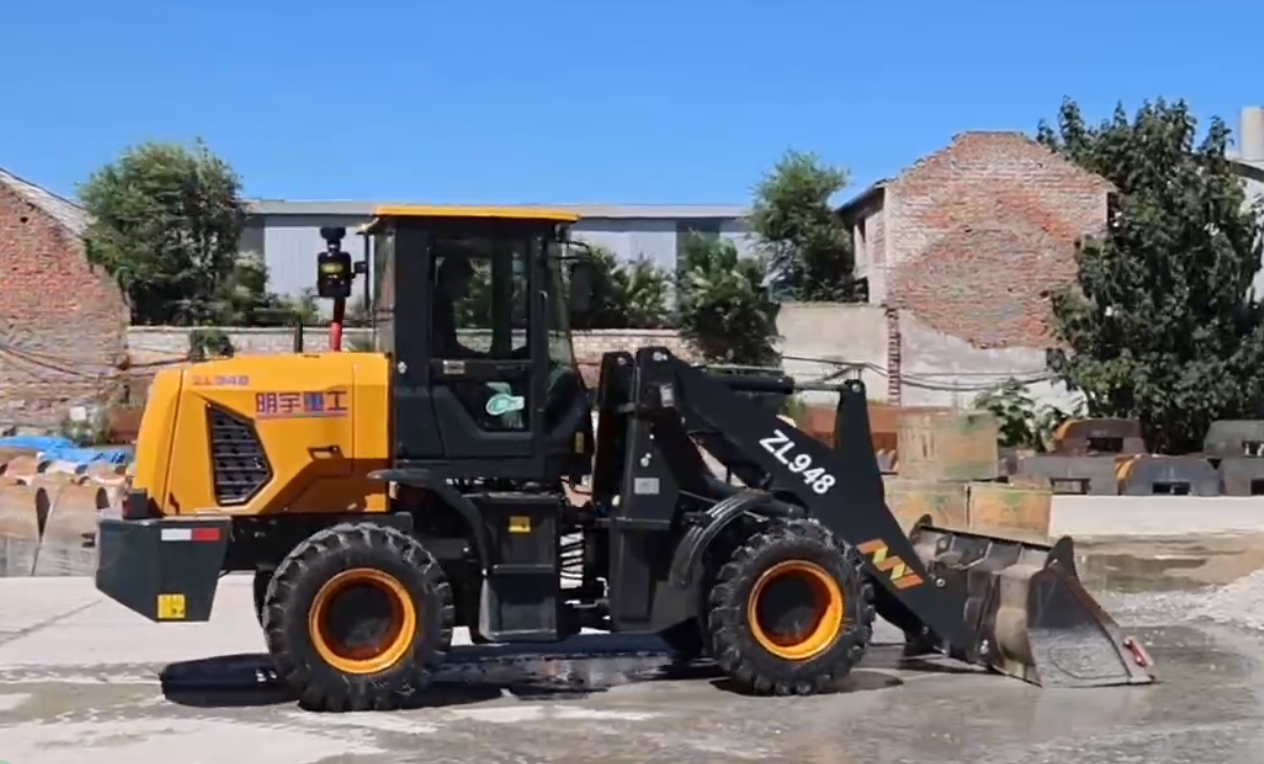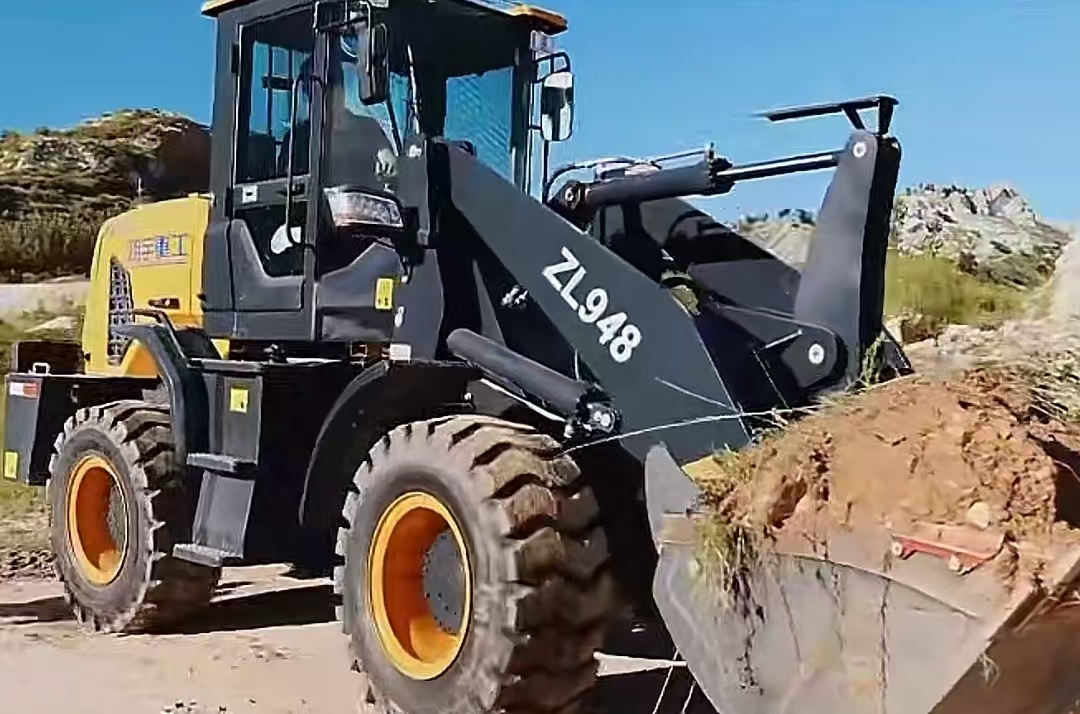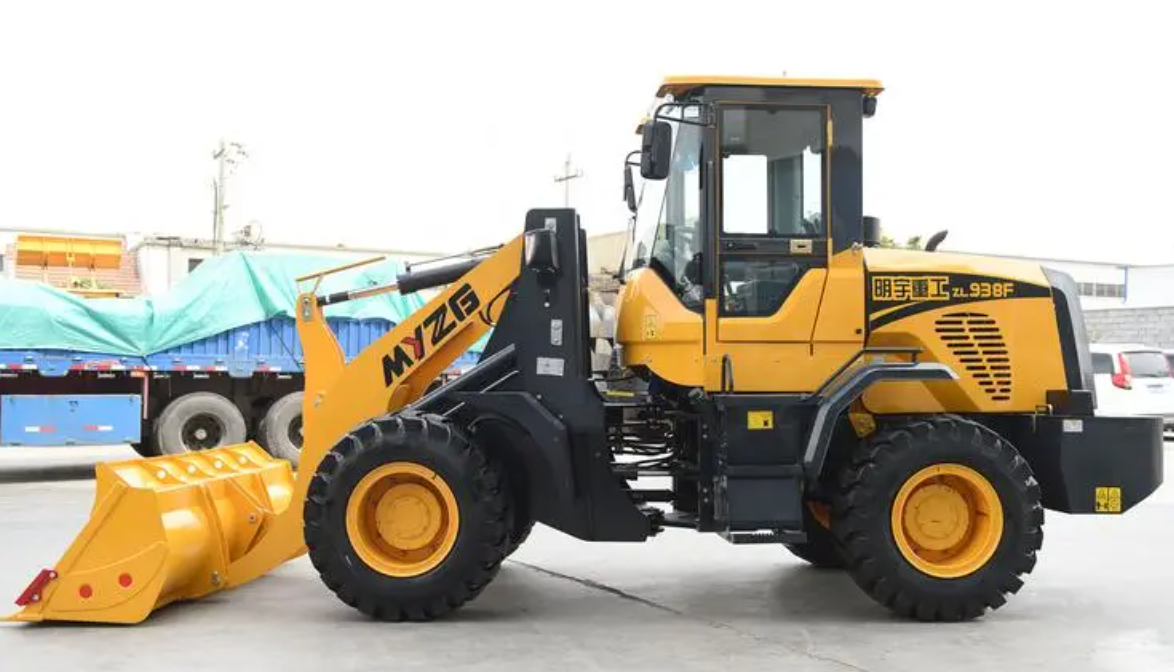I. Introduction
Operating a wheel loader requires a combination of skill, knowledge, and caution. Proper training is essential to ensure safe and efficient operation. This guide provides a comprehensive overview of the key steps involved in operating a wheel loader.
Basic Safety Guidelines:
· Operator Training: Always undergo formal training from a qualified instructor.
· Pre-Operational Checks: Conduct thorough inspections before each use.
· Personal Protective Equipment (PPE): Wear appropriate PPE, including a hard hat, safety glasses, hearing protection, and gloves.
· Worksite Safety: Be aware of your surroundings, avoid distractions, and follow all site-specific safety rules.
· Emergency Procedures: Know how to react in case of emergencies, such as fires or equipment failures.
By following these fundamental safety guidelines, you can significantly reduce the risk of accidents and injuries.
II. Pre-Operational Checks
Before starting the wheel loader, it's crucial to conduct a thorough pre-operational inspection to identify and address any potential issues. Here are the key areas to check:
Visual Inspection:
· Tires: Check for proper inflation, wear, and damage.
· Hydraulic Hoses: Inspect for leaks, cracks, or damage.
· Bucket: Ensure the bucket is securely attached and free of damage.
· Lights: Verify that all lights are functioning correctly.
· Engine Compartment: Check for any signs of leaks, damage, or debris.
Fluid Level Checks:
· Engine Oil: Ensure the oil level is within the recommended range.
· Hydraulic Fluid: Check the hydraulic fluid level and look for any signs of contamination.
· Coolant: Verify the coolant level and inspect for any leaks.
· Fuel: Check the fuel level and ensure there are no fuel leaks.
By performing these pre-operational checks, you can help prevent equipment failures and ensure safe operation.

III. Starting the Engine
Cold Start Procedure:
1. Pre-heat the Engine (Optional): If the temperature is extremely low, use the engine block heater to pre-warm the engine.
2. Engage the Parking Brake: Ensure the parking brake is engaged to prevent accidental movement.
3. Turn the Ignition Key: Turn the ignition key to the "ON" position.
4. Prime the Fuel System (If Necessary): If the engine has been sitting idle for an extended period, prime the fuel system according to the manufacturer's instructions.
5. Start the Engine: Slowly turn the ignition key to the "START" position and hold it until the engine starts.
Warm Start Procedure:
1. Engage the Parking Brake: Ensure the parking brake is engaged.
2. Turn the Ignition Key: Turn the ignition key to the "ON" position.
3. Start the Engine: Turn the ignition key to the "START" position and release it once the engine starts.
Engine Warm-up:
· Idle Period: Allow the engine to idle for a few minutes to warm up.
· Light Load Operation: Gradually increase the engine load by performing light tasks, such as moving the bucket or driving slowly.
· Avoid Heavy Loads: Avoid heavy loads during the warm-up period to prevent excessive stress on the engine components.
IV. Basic Controls and Operation
Understanding the basic controls of a wheel loader is essential for safe and efficient operation. Here's a breakdown of the key controls:
Steering Controls:
· Steering Wheel: Similar to a car, the steering wheel controls the direction of the front wheels.
· Articulated Steering: Some wheel loaders use articulated steering, where the machine pivots at a joint in the middle. This allows for tighter turning radius.
Throttle Control:
· Foot Pedal: The foot pedal controls the engine speed, which in turn affects the machine's speed and hydraulic power.
· Hand Lever: Some models have a hand lever to control the engine speed.
Brake Pedal:
· Service Brake: The service brake is used for normal braking.
· Parking Brake: The parking brake is engaged to keep the machine stationary when parked.
Hydraulic Controls:
· Lever Controls: Traditional lever controls are used to operate the bucket and boom.
· Joystick Controls: Modern wheel loaders often use joystick controls for precise and intuitive operation.
By mastering these basic controls, you can effectively maneuver the wheel loader and perform various tasks.
V. Loading and Unloading Operations
Loading and unloading materials is a primary function of a wheel loader. Here's a step-by-step guide:
Digging and Loading:
1. Positioning the Bucket: Position the bucket close to the material to be loaded.
2. Penetrating the Material: Lower the bucket into the material, using the bucket teeth to penetrate the surface.
3. Loading the Bucket: Back up slowly, applying downward pressure on the bucket to fill it with material.
Dumping:
1. Raising the Boom: Raise the boom to lift the loaded bucket.
2. Tilting the Bucket: Tilt the bucket backward to release the material.
3. Dumping the Material: Position the bucket over the desired dumping location and release the hydraulic control to dump the material.
Returning to Digging Position:
1. Lowering the Boom: Lower the boom to bring the bucket back to ground level.
2. Returning the Bucket to the Ground: Position the bucket in the digging position, ready for the next load.
By following these steps and adjusting the bucket angle and boom height, you can efficiently load and unload various materials.
VI. Maneuvering the Wheel Loader
Effective maneuvering is crucial for safe and efficient operation of a wheel loader. Here are some key tips:
Forward and Reverse Movement:
1. Engaging the Appropriate Gear: Select the desired gear using the gear shift lever.
2. Using the Throttle and Brake Pedals: Gradually apply the throttle pedal to accelerate and the brake pedal to slow down or stop.
Turning:
1. Using the Steering Wheel or Articulated Steering: Turn the steering wheel or use the articulated steering to initiate the turn.
2. Coordinating Steering and Throttle Input: Coordinate the steering input with the throttle to maintain control during the turn.
Traveling on Slopes:
· Uphill Travel: Maintain a steady speed and avoid sudden acceleration or deceleration.
· Downhill Travel: Use the engine brake to control the speed and avoid excessive braking.
By mastering these maneuvering techniques, you can navigate various worksite conditions with confidence.
VII. Safety Considerations
Safety should always be the top priority when operating a wheel loader. Here are some essential safety considerations:
Operator Safety:
· Wear Appropriate PPE: Always wear a hard hat, safety glasses, hearing protection, and gloves.
· Secure Yourself: Use seat belts and other restraint systems.
· Avoid Distractions: Stay focused on the task at hand and avoid distractions.
· Be Aware of Your Surroundings: Keep an eye on your surroundings, especially when backing up or working near other equipment or personnel.
Equipment Safety:
· Regular Maintenance: Perform regular maintenance checks to ensure the machine is in good working condition.
· Avoid Overloading: Avoid overloading the machine, as this can lead to equipment failure and accidents.
· Inspect the Work Area: Inspect the work area for hazards, such as uneven terrain, obstacles, or overhead power lines.
By prioritizing safety, you can minimize the risk of accidents and injuries.·
The begining video "How to drive Mingyu wheel loader ?" does not discuss the operation of a wheel loader a lot. However, I can provide you with some key safety considerations when operating a wheel loader:
Operator Safety:
· Wear Appropriate PPE: Always wear a hard hat, safety glasses, hearing protection, and gloves.
· Secure Yourself: Use seat belts and other restraint systems.
· Avoid Distractions: Stay focused on the task at hand and avoid distractions.
· Be Aware of Your Surroundings: Keep an eye on your surroundings, especially when backing up or working near other equipment or personnel.
Equipment Safety:
· Regular Maintenance: Perform regular maintenance checks to ensure the machine is in good working condition.
· Avoid Overloading: Avoid overloading the machine, as this can lead to equipment failure and accidents.
· Inspect the Work Area: Inspect the work area for hazards, such as uneven terrain, obstacles, or overhead power lines.
By prioritizing safety, you can minimize the risk of accidents and injuries.
VIII. Environmental Considerations
While operating a wheel loader, it's important to be mindful of environmental impacts. Here are some key considerations:
· Fuel Efficiency:
o Proper maintenance of the engine can improve fuel efficiency.
o Avoid idling for extended periods.
o Use the appropriate gear for the task.
· Soil Erosion:
o Minimize soil disturbance by planning the work area and using appropriate techniques.
o Consider using erosion control measures, such as silt fences or vegetation.
· Noise Pollution:
o Use noise-reducing equipment and techniques.
o Schedule noisy operations during less populated times.
· Material Spill Prevention:
o Use containment measures to prevent spills and leaks.
o Clean up spills promptly and properly.
By adopting environmentally friendly practices, you can contribute to a sustainable future.
Post time:Nov.04.2024


